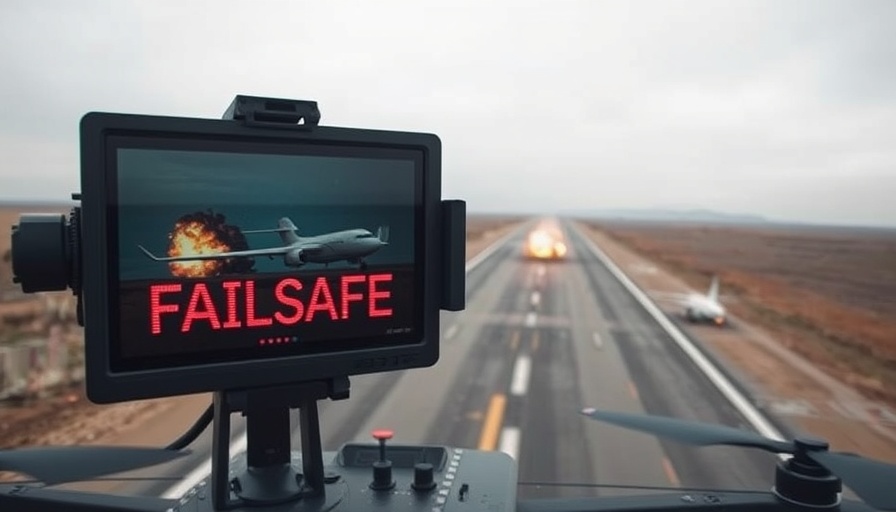
The Transformation of Warfare Through Drone Technology
Ukraine's recent drone strikes on Russian airbases mark a significant evolution in modern warfare, revealing the powerful potential of drone technology. On June 1, 2025, Ukraine executed a coordinated operation known as Operation Spider's Web, deploying 117 drones that successfully devastated Russian airpower. The outcome was monumental, with estimates suggesting a loss of 34% of Russia's strategic bombers, totaling up to $7 billion in damages. This achievement reflects a broader trend; drones have not only changed tactical approaches but also revolutionized the financial dynamics of warfare.
Lessons from the Middle East: A Precedent Set
Over the past decade, the Middle East has borne witness to an evolving battlefield where drones have seized the spotlight. An early indication came from an incident in October 2016 when ISIS utilized a drone laden with explosives against Kurdish forces. This attack was a precursor to the strategic innovation Ukraine would demonstrate years later, illustrating how even relatively inexpensive drone technology can produce disproportionate effects in conflict.
The Inevitable Rise of Drones in Conflict
Ukrainian officials stated that the planning for the drone strikes took 18 months, signifying a focused effort to harness the full potential of unmanned aerial vehicles. The usage of drones for combat operations is not just a Ukrainian phenomenon but is echoed in various Middle Eastern conflicts. Countries in this region have recognized the efficiency of drone strikes, leading to a shift in military strategy that prioritizes low-cost, high-impact methods.
Future Impact: What Lies Ahead for Drone Warfare
The success of Ukraine's drone strike prompts deeper reflections on the future of warfare. Can we expect a surge in countries adopting similar strategies? Most likely. The accessibility of drone technology coupled with its effectiveness means it's here to stay, potentially reshaping military tactics worldwide. As adversaries adapt, the technological arms race will evolve, pushing the boundaries of what drones can achieve in combat.
Conclusion: Adapting to a New War Landscape
As seen with Ukraine's recent advances, the landscape of warfare is evolving. Nations must understand and integrate UAV technology into their strategies to safeguard their interests. The relentless march of drone innovation signifies not just a change in warfare tactics but also the democratization of military power, where efficiency and technological advancement can allow smaller nations to challenge larger state forces effectively.
 Add Row
Add Row  Add
Add 




Write A Comment